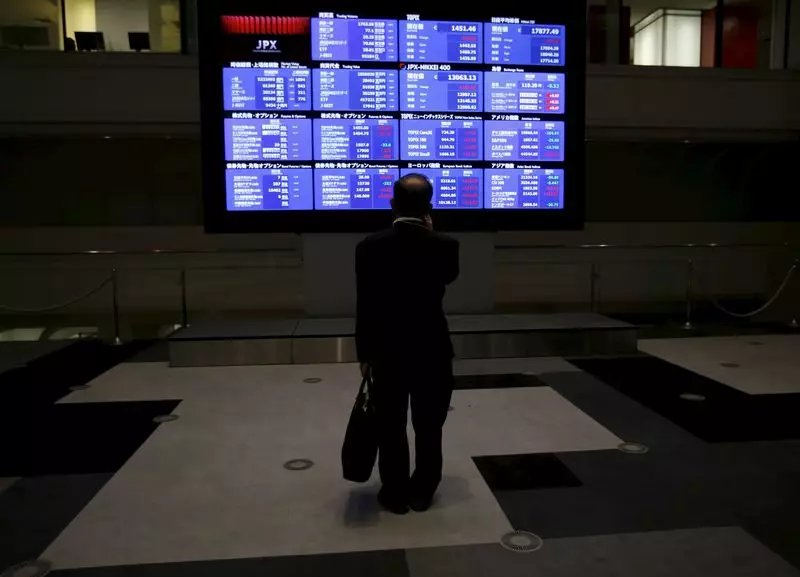As the trading week begins, Asian stock markets remain largely stagnant amidst thin holiday trading, reflecting the apprehension that grips investors globally. Amidst a backdrop of cautious optimism following China’s recent government promises for economic stimulus, uncertainty looms over the specifics of these initiatives. While the announcements have been generally positive, the vagueness surrounding their magnitude leaves traders on edge, anxiously speculating about the potential impacts on the market.
On the weekend, China’s Finance Minister Lan Foan declared intentions to “significantly increase” national debt with the promise of stimulus, yet failed to clarify the size and scope of these measures. This lack of detailed information has caused investor sentiment to waver, with many questioning the sustainability and effectiveness of the anticipated economic support. Following a robust rally in Chinese stocks after aggressive stimulus measures were first announced last month, the recent weakness has prompted speculation about the longevity of this market upswing.
Market analysts, such as Ray Attrill, the head of FX strategy at National Australia Bank, noted that investor enthusiasm may give way to disappointment. The anticipation leading up to the announcement created a sense of urgency, and the absence of explicit fiscal measures has dampened expectations for immediate market revival. This atmosphere of uncertainty will likely keep traders on edge as they await further clarity on how the stimulus will directly impact consumers and businesses alike.
The MSCI Asia-Pacific index, a benchmark tracking performance outside of Japan, noted a minor gain of 0.12% in early trading, albeit following a notable drop of 1.7% the previous week. Meanwhile, U.S. stock futures have also moved lower as investors grapple with economic signals that diverge from the anticipated. The S&P 500 and Nasdaq futures indicated slight decreases, an indication that risk aversion is translating to a more cautious trading environment globally.
Despite China’s promises, additional data adds layers of concern about economic conditions. Recent consumer inflation figures showed some unexpected easing, while producer prices experienced intensified deflation. These indicators reflect potential weaknesses in domestic consumption and highlight the critical need for effective stimulus measures to stabilize growth. The offshore yuan’s slight depreciation against the dollar serves as a further testament to the market’s apprehensive stance towards China’s economic outlook.
In conjunction with the stagnant stock market movement, currencies experienced minimal fluctuations against the global benchmark, notably with the U.S. dollar benefiting from subdued interest rate expectations from the Federal Reserve. Reduced chances of an aggressive rate cut next month have provided support for the dollar. Meanwhile, currencies such as the British pound and euro recorded marginal declines, reflecting an overall risk-averse atmosphere prevailing over the markets.
With traders absorbing the implications of last week’s economic reports from the U.S. that pointed to inflationary pressures and a resilient labor market, more cautious projections regarding interest rate cuts seem to be the consensus. This dynamic places additional scrutiny on global asset allocations and cross-currency strategies.
Commodities have also not been spared from the swirling sentiments surrounding global economic health. Oil prices, a crucial barometer for economic activity, fell by over $1 per barrel on the day amid fears of diminished demand spurred by China’s noncommittal stimulus presentation. Brent crude futures and U.S. West Texas Intermediate crude futures both diminished, exhibiting traders’ concerns about a potential slowdown in consumption and the broader implications for global energy markets.
Simultaneously, gold prices have slightly eased, indicative of a retreat in safe-haven demand as market participants remain conflicted between the allure of fortune amid stimulus hopes and the lurking uncertainties tethered to economic data and policy decisions.
As we navigate the complexities of this emerging financial landscape, the market’s reactions to China’s economic stimulus, along with broader global economic signals, underscore a balancing act for investors. While there are hints of potential growth stemming from planned stimulus, the nebulous outlines and the latest economic indicators underscore a pivotal turning point. Investors will need to remain vigilant, as the coming weeks will likely reveal whether the markets can regain confidence or whether a more profound correction may emerge. Given the persistent uncertainties, the stage is set for a turbulent yet potentially transformative financial season.

